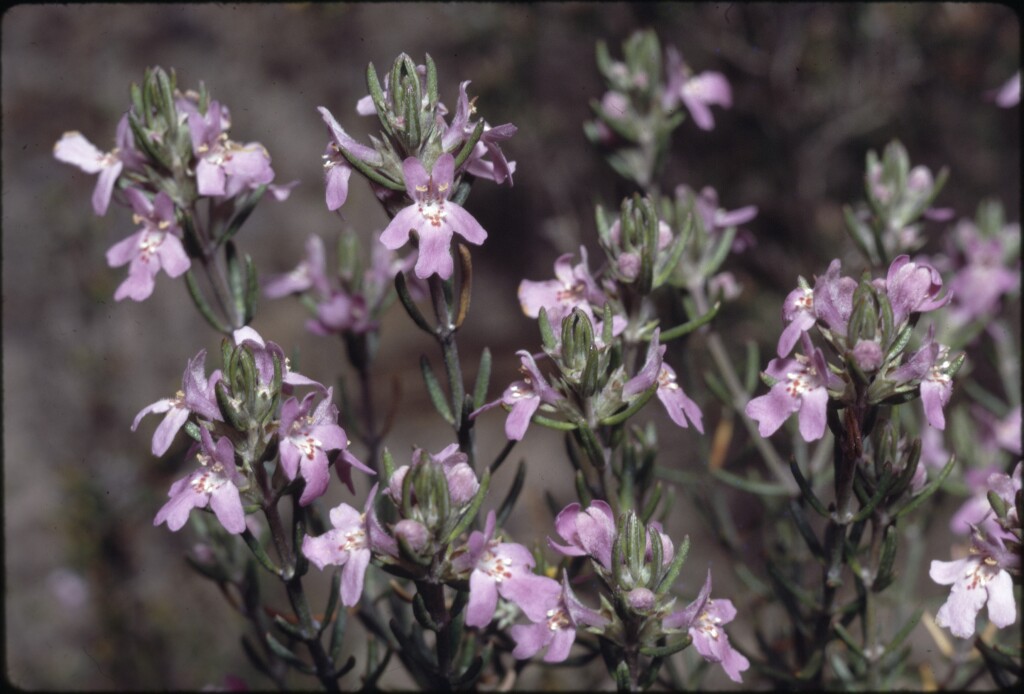Westringia eremicola
A.Cunn. ex Benth. Slender WestringiaShrub to 1.5(–2) m high. Leaves in whorls of 3 (or 4), narrowly elliptic to linear, (4–)8–20(–27) mm long, (0.5-)0.8–1.6 mm wide, length-to-width ratio (4–)6–20(–36), moderately to densely covered in c. appressed, simple, antrorse hairs, often c. scabrous, margin entire and recurved (often such that abaxial surface almost concealed); petiole 0.5–0.7 mm long. Bracteoles 0.8–2 mm long. Calyx green, outer surface densely hairy, tube 2.5–4(–4.5) mm long, lobes triangular, 1–3(–5.3) mm long, 1–2 mm wide, lobe-to-tube ratio 0.3–1.3(–1.7); corolla 6.5–8.5 mm long, lilac, mauve or purple (rarely white), with orange to brown dots or dots possibly sometimes absent. Flowers throughout the year.
LoM, MuM, Wim, VVP, VRiv, MuF, Gold, CVU, GGr, DunT, NIS, EGL, EGU, HNF, MonT. Also SA, Qld, NSW. Scattered throughout Victoria, mostly north of the Great Dividing Range, in mallee, dry woodland and Box-Ironbark forests, with ecologically disjunct occurrences on sandy or rocky margins of watercourses in the far east (e.g. Thurra and Genoa Rivers).
A variable species, with plants from far eastern Victoria tending to have longer leaves than plants from the drier western parts of the State, and New South Wales and South Australia.
Conn, B.J. (1999). Lamiaceae. In: Walsh, N.G.; Entwisle, T.J., Flora of Victoria Vol. 4, Cornaceae to Asteraceae, pp. 418–459. Inkata Press, Melbourne.
 Spinning
Spinning

